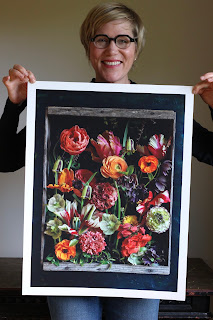Desiree
Villena is a writer with Reedsy, which connects authors with self-publishing
resources and professionals. She also writes her own short stories.
Please welcome Desiree Villenna.
I’m more of a novel person at heart, but I read dozens of short stories every week. My consumption is varied, ranging from space operas set in Alpha Centauri to domestic realism confined to a tiny kitchen. Some of these stories are ideally suited to my interests, touching on the themes and tropes I tend to seek out in novels. Others, though, feel dropped into my lap like unexpected gifts — the kind you end up loving even though you’d never pick them out yourself.
Where do I find all these stories? I’m a judge for Reedsy’s writing contest. Every week, short story writers from around the world send 1000 to 3000 words of fiction in response to a set of prompts. That’s where judges like me come in. Together, we assess entries for everything from plot to prose, until the best story of the group emerges to take the crown.
Few of us judges are professional editors, but judging stories every week has honed our instincts when it comes to evaluating short fiction. I think I speak for all my fellow judges when I say this process has also sharpened our senses for craft, giving us all eagle eyes for what makes short stories work.
Here are five lessons I’ve taken from this experience.
1.
The most important part of any story is the beginning. In
literature, as in life, first impressions can be hard to shake. If you’re a
short fiction writer, the onus is on you to dazzle readers right from that
outset — you can’t rely on a mesmerizing cover design (or worse, have to
overcome a possibly misleading image). And that means crafting a compelling
opening.
I’ve found that the best indicator of a stories overall quality isn’t its climax or conclusion — it’s the beginning. A strong start activates the reader’s instinct for narrative, exactly the way a mouthwatering aroma triggers the appetite. Those enticing opening lines say: Pay attention. You’re in for something good.
2. Strong beginnings can sometimes save misshapen stories. Unfortunately, writers sometimes squander the potential of a gorgeous opening. But in my experience, that initial intrigue can buy them quite a bit of readerly goodwill, even if the story starts to unravel a bit. At its most extreme, the halo cast by a perfect beginning can blanch away all kinds of flaws, making unsatisfying endings seem sophisticated in their ambiguity and reframing rambling passages as nuanced and philosophical.
Of course, you should strive to make your story uniformly strong. But if you want to pour a little more effort into one particular part of it, invest in the beginning.
3. Style matters more in short fiction. When it comes to novels, I tend to be somewhat style-agnostic. As long as the writer’s voice doesn’t strain understanding, what they say is far more important to me than how they say it. Even flat, colorless prose can be an effective vehicle for a dazzling plot or an unforgettable protagonist.
As a short fiction reader, I’ve grown more and more attuned to the importance of distinctive, aesthetically pleasing treatment of language. In a form as compressed as a thousand-word story, the boundaries between style and substance feel blurred — there’s no room for carelessness in the writer’s expression.
4. But good style is genre-dependent. Know that “good” style doesn’t have to mean Nabokovian gorgeousness or Hemingway-esque minimalism. It just means that the prose conveying the writer’s ideas complements them in a way that seems thoughtful and intentional. Different types of stories naturally demand different treatments.
A story aimed at young readers can be zippy and cute, full of short sentences, snappy dialogue, and delightful onomatopoeias. Meanwhile, a piece of mature historical fiction might be staid and restrained in its language, filigreed with period phrases that give it an air of authenticity. As different as they are, these are both examples of thoughtfully crafted, appropriate literary styles.
5. Short form makes it easier (and more rewarding) to take stylistic risks. The formal restrictions imposed on short fiction writers might amplify stylistic problems, but they also make it easier to take big risks.
Some of the strongest entries I’ve encountered as a judge make a point of flouting established writing guidelines. I’ve seen second-person stories, stories written entirely in future tense, and even stories that, on balance, do far more telling than showing. Somehow, they’ve all worked, and not just worked — they won.
If you want to gamble on a controversial narrative choice, your next short story is the perfect chance. Even less adventurous readers will find unusual storytelling techniques more palatable in short form. Meanwhile, those with avant-garde sensibilities will applaud you for your daring. Even after all the stories I’ve read, there’s nothing I admire more than a stylistically ambitious story told with conviction and verve.
Visit Reedsy
to learn more about their contests and other resources.
Images: Flickr/CreativeCommons - Stack of Papers, Philip Wong; Handwritten Pages, Julio Garciah.














